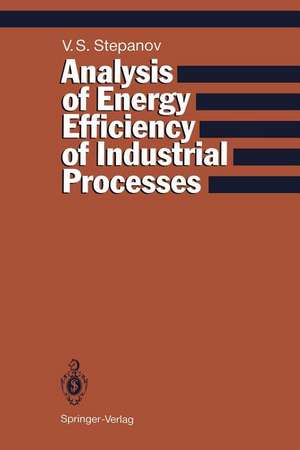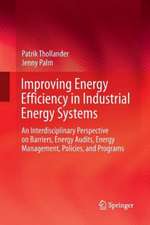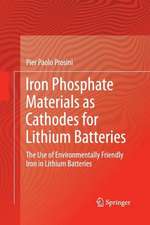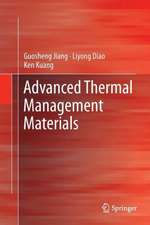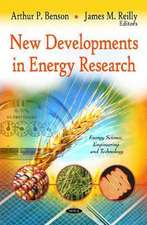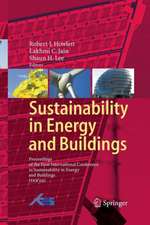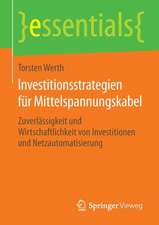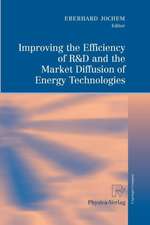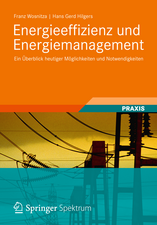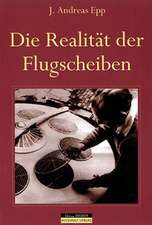Analysis of Energy Efficiency of Industrial Processes
Autor Vladimir S. Stepanoven Limba Engleză Paperback – 16 dec 2011
Preț: 636.12 lei
Preț vechi: 748.38 lei
-15% Nou
Puncte Express: 954
Preț estimativ în valută:
121.76€ • 132.30$ • 102.34£
121.76€ • 132.30$ • 102.34£
Carte tipărită la comandă
Livrare economică 21 aprilie-05 mai
Preluare comenzi: 021 569.72.76
Specificații
ISBN-13: 9783642771507
ISBN-10: 3642771505
Pagini: 208
Ilustrații: XV, 186 p.
Dimensiuni: 155 x 235 x 11 mm
Greutate: 0.3 kg
Ediția:Softcover reprint of the original 1st ed. 1993
Editura: Springer Berlin, Heidelberg
Colecția Springer
Locul publicării:Berlin, Heidelberg, Germany
ISBN-10: 3642771505
Pagini: 208
Ilustrații: XV, 186 p.
Dimensiuni: 155 x 235 x 11 mm
Greutate: 0.3 kg
Ediția:Softcover reprint of the original 1st ed. 1993
Editura: Springer Berlin, Heidelberg
Colecția Springer
Locul publicării:Berlin, Heidelberg, Germany
Public țintă
Professional/practitionerCuprins
1. The Technological Process as a Subject of Thermodynamic Analysis.- 1.1 Thermodynamic Systems and Processes.- 1.2 The Laws of Thermodynamics.- 1.3 State Functions.- 1.4 Thermodynamic Properties of Substances and Their Changes in Chemical Processes.- 1.5 Thermochemistry.- 1.6 Maximum and Minimum Work. The Gouy-Stodola Law.- 1.7 The Concept of Exergy. The Exergy Method of Analysis.- 2. Efficiency of Technological Processes Based on Energy Balance.- 2.1 Heat Balance of a Process.- 2.2 Complete Energy Balance.- 2.3 Solving Practical Problems.- 2.4 Theoretical Potential and Energy Reserves.- 3. Calculation of Chemical Energy and Exergy of Elements and Elementary Substances.- 3.1 Choice of Environment Model.- 3.2 Short Overview of Methods.- 4. Optimizing the Use of Thermal Secondary Energy Resources.- 4.1 Thermal Secondary Energy Resources.- 4.2 Minimizing Costs. Optimal Composition of Heat Recovery Installations.- 4.3 Determination of the Optimal Extent of Secondary Energy Resource Utilization at an Industrial Plant.- 5. Energy Balances in Ferrous Metallurgy.- 5.1 The Production Scheme.- 5.2 Energy Balances of the Metallurgical Complex and its Main Shops.- 5.3 Energy Losses and Possible Secondary Energy Resources.- 5.4 Determination of the Economically Feasible Value of Using Thermal Secondary Energy Resources.- 6. Energy Use for Energy Efficiency Increase in Non-ferrous Metallurgy.- 6.1 Copper Production.- 6.2 Lead and Zinc Production.- 6.3 Production of Titanium and Magnesium.- 7. Predicting Energy Conservation in an Industry by Modeling Individual Sectors.- 7.1 The Scope of the Problem.- 7.2 Forecasting Energy Consumption in an Industrial Sector.- 7.3 Forecasting Exergy Expenditures.- 7.4 Financial and Energy Expenditures for Environmental Protection.- 8. Evaluation ofEnergy Reserves as a Result of Energy Conservation. Ferrous Metallurgy.- 8.1 Steelmaking.- 8.2 Coke and Coking By-product Production.- 8.3 Rolled Stock.- 8.4 Influence of Other Parameters.- References.
